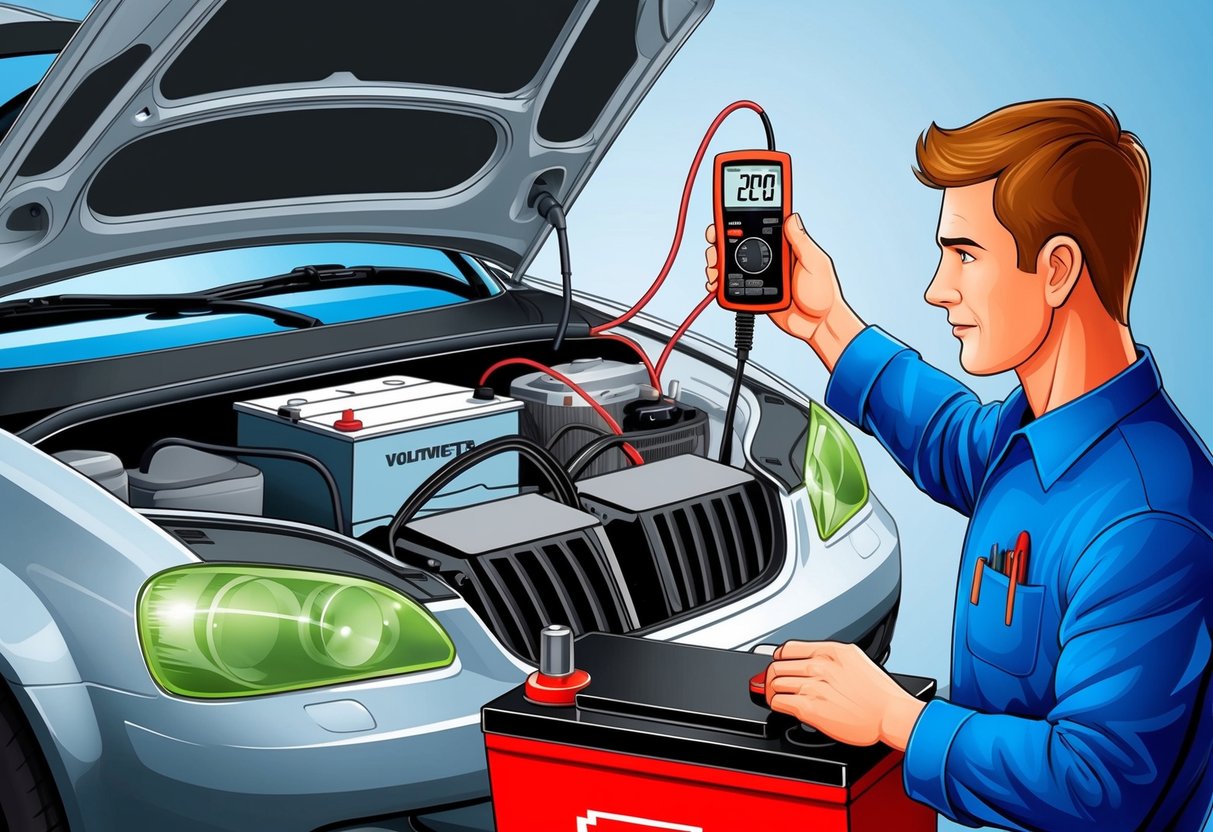
Knowing when to replace a car battery can prevent unexpected breakdowns and costly roadside emergencies. The most reliable signs that a car battery needs replacing include a slow engine crank, dim headlights, electrical issues, or a battery that is more than three to five years old.
Ignoring these red flags can leave drivers stranded and can also affect the performance of other electrical components in the vehicle.
For those experiencing inconsistent starts, problems with dashboard electronics, or an illuminated check engine light, these symptoms often point to a failing battery. Trusted automotive sources recommend watching for indicators like difficulty starting the car, which may signal it’s time for a fresh battery; more details on these signals can be found at this guide to key signs your car battery needs replacement.
Recognizing the early warning signs and understanding the lifespan of car batteries helps drivers avoid the inconvenience of being caught off guard.
A well-functioning battery is crucial for reliable vehicle operation. Regular inspection and attention to common battery problems allow drivers to enjoy consistent performance and minimize the risk of disruptions caused by sudden battery failure.
Understanding How Car Batteries Work
A car battery is responsible for delivering the electrical power needed to start a vehicle and operate essential electronics. Understanding its functions, the different types available, and how long they generally last helps drivers make informed maintenance decisions.
Basic Functions of a Car Battery
The car battery’s main purpose is to supply the necessary electricity to start the engine. When the ignition key is turned, the battery delivers a burst of power to the starter motor and ignition system.
This process allows the engine to turn over and begin running on its own. After the engine starts, the battery continues to play a crucial role by powering the vehicle’s electrical systems when the engine is off and stabilizing the voltage to prevent damaging surges.
It supports lights, infotainment, instrument panels, and electronic accessories. Modern vehicles rely more heavily on electronics, making a dependable battery essential for everyday use and safety features.
When the battery cannot hold a proper charge, the vehicle may not start or may experience issues with electronics and sensors.
Types of Car Batteries
There are several main types of car batteries that serve different automotive needs. The most common is the lead-acid battery, which is valued for its affordability and reliability.
These are further divided into two subtypes: flooded (wet cell) and sealed (maintenance-free). Flooded batteries require periodic maintenance, while sealed types are designed to be maintenance-free.
Absorbent Glass Mat (AGM) batteries are another popular option, often found in vehicles with start-stop systems or heavy electronic loads. AGM batteries provide better deep cycling and faster charging compared to traditional lead-acid varieties.
Some newer vehicles, especially hybrids and electric cars, use lithium-ion batteries. These batteries are lightweight and support high energy densities, but are more expensive and found mostly in electric or hybrid models.
Typical Battery Life Expectancy
Most car batteries have a typical lifespan of 3 to 5 years under normal driving conditions. Environmental factors play a significant role: extreme temperatures, frequent short trips, and high electrical demands can shorten battery life.
A battery’s ability to hold a charge diminishes over time as its internal components age and degrade. Signs that battery replacement might be needed include slow engine cranking, dim headlights, and dashboard warning lights.
Voltmeter readings below 12.4 volts could also suggest diminished battery capacity, indicating it is time for further testing or replacement. For more details on battery health and indicators, check know when to replace the car battery.
To ensure maximum battery life, it is best to have the battery checked regularly, especially after three years of service or when experiencing any starting issues.
Common Signs Your Car Battery Needs Replacing
Batteries degrade over time and can fail when least expected, leaving drivers stranded or dealing with unreliable vehicle performance. Paying attention to symptoms like slow startups, electrical issues, and visual signs of damage can help prevent a dead battery at an inconvenient time.
Engine Is Slow to Start
A common indicator of a failing battery is an engine that cranks more slowly than usual when starting. This sluggish start means the battery is struggling to deliver enough power to the starter motor.
The difference can be subtle at first, sounding like hesitation before the engine turns over. If the problem persists, it typically becomes more pronounced in colder weather when batteries are under extra stress.
Frequent slow starts are a warning that the battery is losing its ability to hold a charge or has a diminished capacity. It’s best to have the battery tested or replaced once slow cranking becomes a pattern rather than a rare occurrence.
For practical information, see the guidance from Southgate Ford on car battery signs.